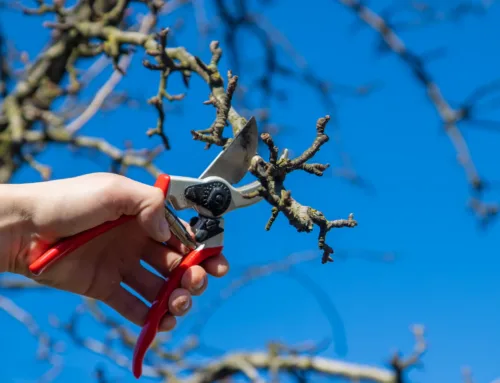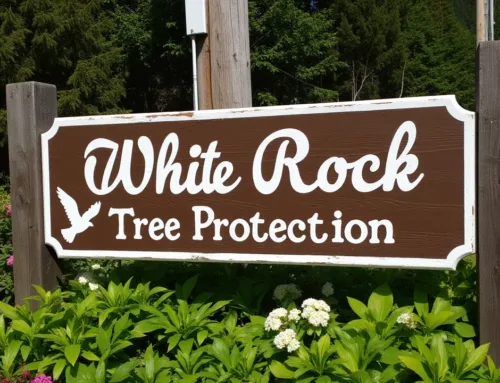What is Tree Wrap?: Protecting Your Trees Through the Seasons
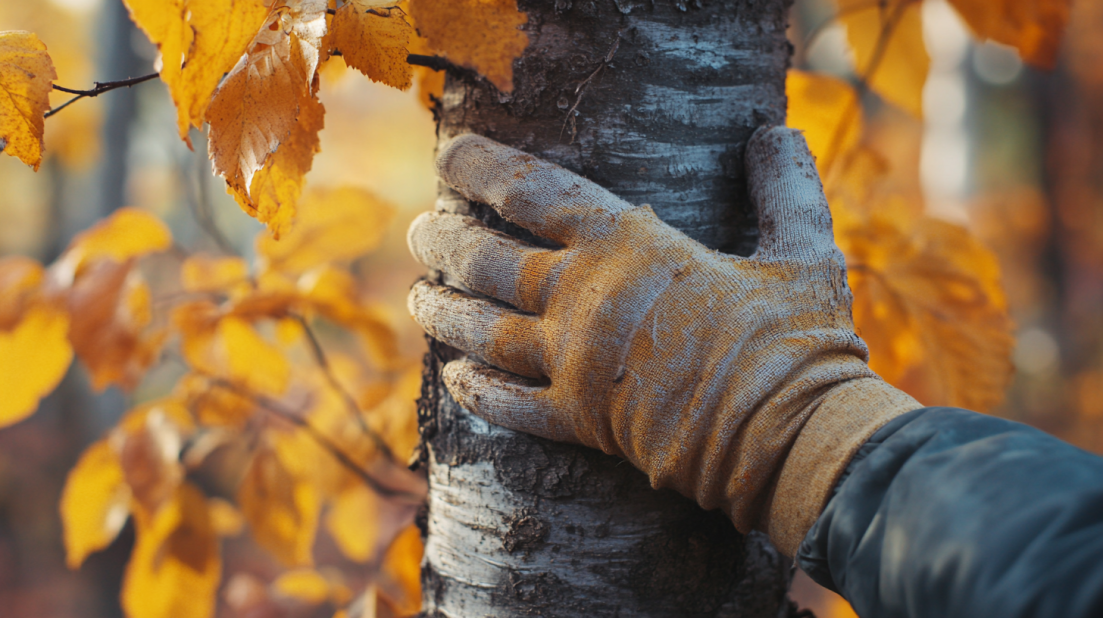
Tree wrap is a protective material used to shield tree trunks from various environmental stresses. Often overlooked by homeowners, this simple tool can play a crucial role in maintaining tree health, especially for young or recently transplanted trees. Let’s explore what tree wrap is, why it’s used, and how to apply it effectively.
Understanding Tree Wrap
Tree wrap typically comes in the form of paper, burlap, or plastic strips designed to be wound around a tree’s trunk. These materials create a barrier between the tree bark and the outside environment. While the concept is straightforward, the benefits of tree wrap can be significant for certain trees in specific conditions.
The primary purpose of tree wrap is to protect trees from extreme temperature fluctuations, particularly during winter months. In regions with cold winters, like parts of British Columbia, the sun can warm tree bark during the day, only for temperatures to plummet at night. This cycle can cause the bark to expand and contract rapidly, leading to a condition called sun scald or southwest injury.
Sun scald occurs when the rapid temperature changes cause the tree’s bark to split or crack, creating wounds that can invite pests and diseases. Young trees with thin bark are especially vulnerable to this type of damage. Tree wrap helps moderate these temperature swings, keeping the bark at a more consistent temperature.
- Beyond temperature regulation, tree wrap serves several other protective functions:
- Pest Prevention: The physical barrier created by tree wrap can deter some insect pests and small animals from damaging the bark.
- Moisture Retention: In dry climates or during droughts, tree wrap can help retain moisture in the trunk, reducing stress on the tree.
- Transplant Protection: Newly transplanted trees often experience shock. Tree wrap can provide a stable environment for the trunk as the tree establishes itself in its new location.
Proper Application of Tree Wrap
Applying tree wrap correctly is key to its effectiveness. Here’s a general guide:
- Timing: In colder climates, apply tree wrap in late fall before the first frost. Remove it in early spring as temperatures begin to warm.
- Direction: Start at the base of the tree and wrap upward, overlapping each layer slightly to ensure complete coverage.
- Tightness: The wrap should be snug but not tight enough to constrict the tree’s growth.
- Height: Wrap the trunk up to the first set of branches for most trees.
It’s important to note that tree wrap isn’t a permanent solution. It should be removed during the growing season to allow the bark to breathe and to prevent moisture buildup, which can lead to fungal growth.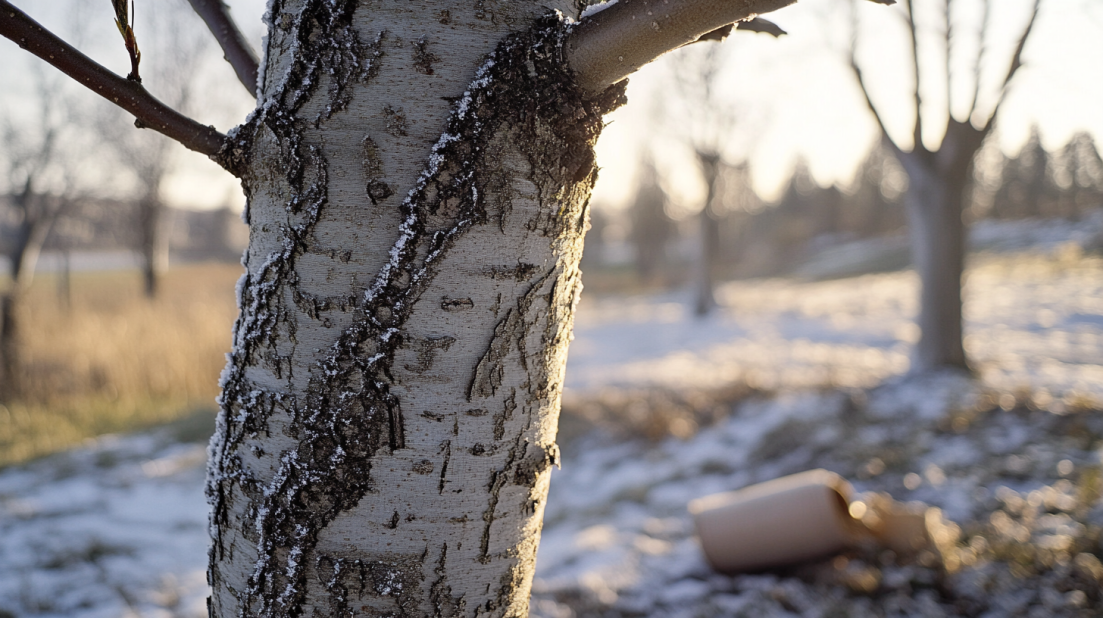
When to Use Tree Wrap
Not all trees need wrapping, and in some cases, improper use of tree wrap can do more harm than good. Tree wrap is most beneficial for:
Young trees with thin bark Recently transplanted trees Trees prone to sun scald (often those with southwest exposure) Trees in areas with extreme temperature fluctuations
Common tree species that often benefit from winter wrapping include maple, linden, and fruit trees like apple and cherry.
Alternatives to Traditional Tree Wrap
While paper or burlap wraps are common, there are alternative methods for protecting tree trunks:
Paint: Some arborists recommend painting the south and southwest sides of trunks with white latex paint diluted with water. This reflects sunlight and can prevent sun scald without the need for wrapping.
Tree Guards: Plastic or metal guards can be installed around the base of the tree to protect against rodent damage and lawn equipment injuries.
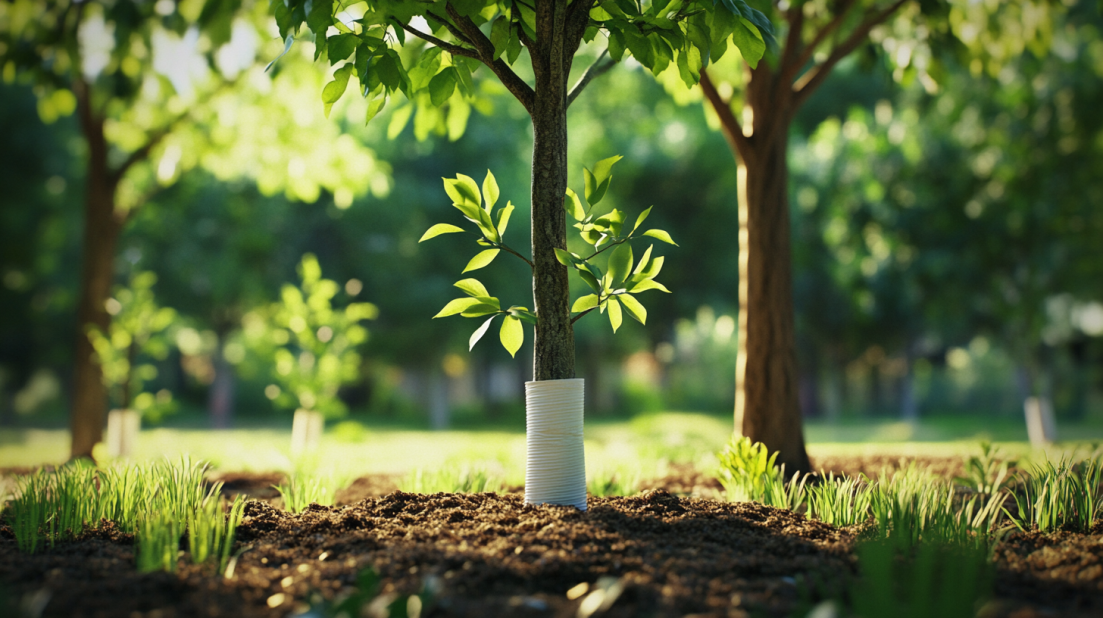
Considerations and Cautions
While tree wrap can be beneficial, it’s not without potential drawbacks. Improper use can create a hospitable environment for pests or fungi. It’s crucial to remove the wrap at the appropriate time and to inspect the tree regularly for any signs of damage or disease.
For homeowners unsure about whether their trees need wrapping or how to apply it correctly, consulting with a certified arborist is advisable. These professionals can assess your specific trees and provide tailored recommendations based on species, age, location, and local climate conditions.
Tree wrap is a simple yet effective tool for protecting vulnerable trees from environmental stresses. By understanding its proper use and limitations, you can help ensure the health and longevity of the trees on your property. Remember, the goal is to support the tree’s natural defenses, not to replace them entirely. With the right approach, tree wrap can be a valuable part of your overall tree care strategy.

